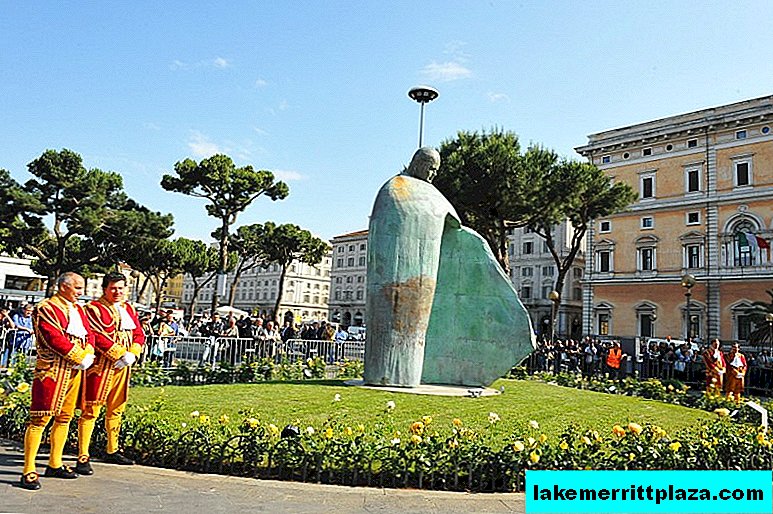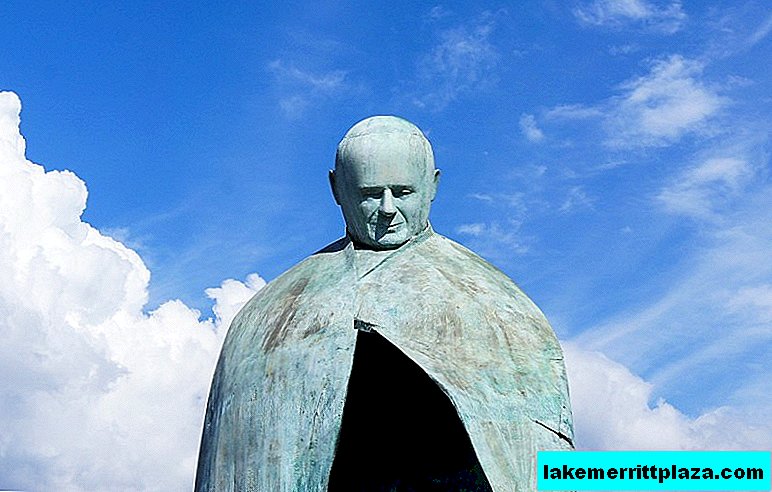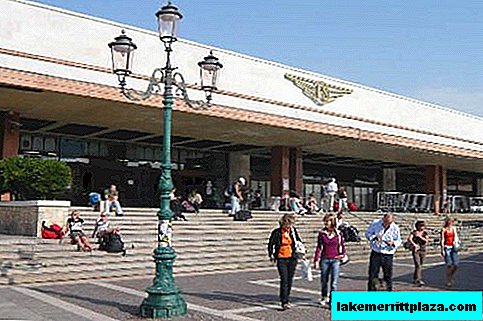The statue of Pope John Paul II is quite impressive in size on a busy square in front of Termini Station. The explanation for this strange choice is as follows: An express train leaves for the Vatican from the station. So waiting for him, you can pass the time, considering the image of the most popular dad. The pontiff is depicted opening the floors of his robes, which symbolizes his willingness to accept and protect any person. The monument deserves your attention.

Monument to John Paul II at Termini Station. Monument with a difficult fate, photo by Artribune
Monument to Pope John Paul II (Monumento a Giovanni Paolo II) first appeared on the Roman Piazza dei Cinquecento (Piazza dei Cinquecento) at Termini Station on May 11, 2011. "For the first time" - because soon after the opening, the monument had to be dismantled and remade.
John Paul II during his life was called the "preacher of the renovation church." The sculptor Oliviero Rainaldi designed a sketch of the monument to the pontiff in the spirit of modernism. The official Vatican approved the outline of the project, Raynaldi began work.
However, on the opening day, all those present were unpleasantly surprised. Instead of the promised monument of Karol Wojtyla, wrapped in his traditional cloak and symbolically enveloping a large flock, a strange construction appeared before the eyes of the public. It resembled an angular empty booth or tent, crowned with a head without a neck, with an expressionless face completely unlike the inspired face of the Pope.

Monument to the Pope (Monumento a Giovanni Paolo II), photo by Artribune
A scandal erupted. The press openly ridiculed the monument, comparing the bronze statue with Benito Mussolini and calling it a "homeless shelter". The RCC tried to disown, stating that a completely different project had been submitted for approval. Raynaldi accused the foundry workers of deviating from the sketch, simultaneously complaining about the limited public who did not appreciate the subtle creative plan. City Hall conducted a survey among the Romans. Almost 90 percent of the townspeople did not approve of the monument.
It was decided to send the statue for revision. Redid it himself Raynaldi. The head of the monument was completely changed, giving the face a good expression and a greater resemblance to the features of the original; the outlines of the shoulders made smooth. The new opening of the monument took place on November 18, 2012.

Pope John Paul II, photo by Giorgio Ranu '
How to get there
Take the metro line A or B to Termini station.
How do I save on hotels?
Everything is very simple - look not only at the booking. I prefer the search engine RoomGuru. He is looking for discounts at the same time on Booking and on 70 other booking sites.








